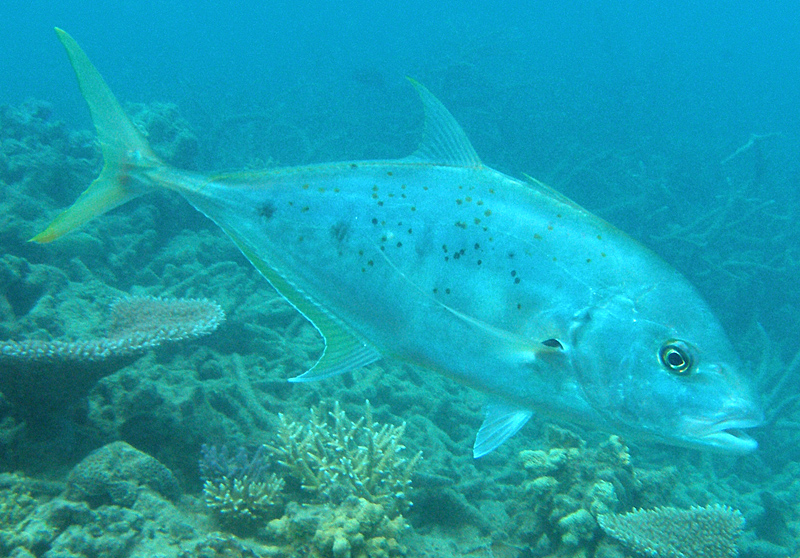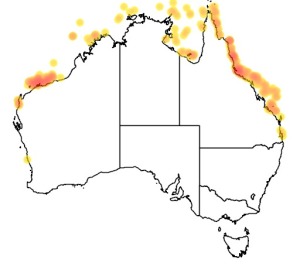Colours
Distinguishing features
A large, fast moving silvery fish with a speckling of gold spots over the back and flank, arranged loosley into 4 vertical groups. Usually seen in pairs or small schools along the edges of reefs and in passes.
Size
- Up to 120 cm (Standard length)
Depth range
- Depth range data is not yet available.
Synonyms
Interesting facts
- The pectoral fins (arms) of the Gold Spotted Trevally are like the wings of a Falcon. They are thin and pointed to reduce drag through the water, designed for speed. These fish chase down their prey like cheetahs, following fish and squid into lagoons and seagrass beds and separating them into small groups so they are easier to catch.
Distribution
Distribution and habitat preferences
Areas of deep water close to reefs, favours locations with good water movement and plentiful schools of planktivores.
Found in most reef habitats around the island.
Behaviour
A fast moving predator on small fishes and invertebrates, this species will come close to reefs in order to hunt schools of fusiliers, damselfishes and hardyheads - the latter often jump out of the water in a spectacular shower as the trevallies attack from below. Carangids hunt most frequently at dawn and dusk when light levels are low and prey fishes are easier to surprise. This species is mature at about 4 years and lives to more than 12 years.
Web resources
References
- Barton, D.P., C. Beaufrere, J.-L. Justine and I.D. Whittington (2009). Polyopisthocotylean monogeneans from carangid fishes off Queensland, Australia and New Caledonia, with a description of Heteromicrocotyloides megaspinosus, Acta Parasitlogica, 54: 205-217. LIRS catalog number 1255.
- Bray, R.A., T.H. Cribb and S.C. Barker (1993). Hemiuridae (Digenea) from marine fishes of the Great Barrier Reef, Queensland, Australia, Systematic Parasitology, 25: 37-62. LIRS catalog number 484.
- Burdon-Jones, C. and G.R.W. Denton (1981). Metals in marine organisms from the Great Barrier Reef Province. Part 1. Base line survey,Interim Progress Report, James Cook University, Townsville.. LIRS catalog number 69.
- View all references





